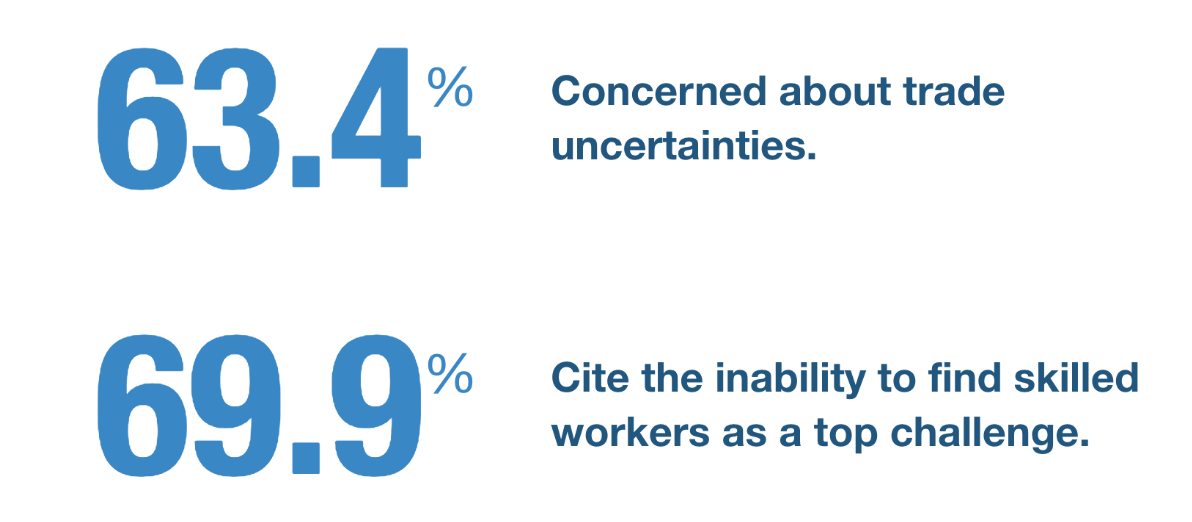Much of the focus in food and beverage processing is on flavor, visual appeal, safety, and shelf life of products shipped to consumers. Nothing is as exciting as bringing a new and interesting product to market. But regardless of the broad appeal of any product, nothing gets to market without a fully trained, dedicated, and energetic group of employees to make it happen. And any item that is produced must be made economically and within a prescribed schedule and must exhibit the highest quality.
Unfortunately, in today's high-tech world, many younger workers seek employment in newly minted companies such as Google, Amazon, and Facebook. Young people just entering the workforce seek clean, bright working environments with the latest high-tech equipment. Today, too many young workers are reluctant to explore manufacturing as a career, believing it takes place in antiquated factories with little long-term personal growth potential. Add to this reluctance the effects of the pandemic and the lack of manufacturing skills training, and manufacturers of all types, including those in the food and beverage industry, face considerable hurdles in securing and retaining a sufficient number of skilled employees.
Think Outside the Box to Overcome Workforce Shortages
Many industry initiatives can be undertaken to both attract skilled employees and supplement internal staff with improved labor efficiency. These include presenting a fresher, more modern face to the general public and improving labor efficiency utilizing the many techniques of Industry 4.0. Below are some actions companies can take to help alleviate the shortage of skilled employees.
1. Get involved in local communities, utilize social media, participate in trade shows, and present special programs.
Letting the community know that today’s manufacturing plants are clean, bright places to work with plenty of advancement opportunities can go a long way toward dispelling the misconceptions of factories as bleak, dreary work environments. Explaining how Industry 4.0 technology has changed the character of today’s processing plants helps present an up-to-date image. Participating in community events, setting up booths at job fairs, and becoming involved in school STEM programs are good ways to project food processing in clear, favorable terms.
2. Improve equipment and line performance to gain labor efficiency.
Using real-time production line data, managers can identify areas for improving line throughput and product volumes. Worximity’s Smart Sensor TileConnect Technology gathers equipment performance data during production runs and sends it to the cloud. Our Smart Factory analytics software then generates factory KPIs, including overall equipment effectiveness (OEE), to guide supervisors in locating and correcting lost time. Improving line efficiencies is one of the most effective methods of increasing product volumes without adding additional staff.
3. Rethink work processes and material flows.
Often, factory process procedures and material flow instructions stay in place without review for many years. Analyzing current production methods can uncover areas of inefficiencies that, once eliminated, can add productive time to your processing lines. Additional productive time means greater throughput with the same staff.
4. Focus on cross-training current employees and utilizing contract employees to bridge the gaps.
Meeting delivery schedules with the correct product and quantity on the correct date is essential to maintaining good customer relationships. If a processor is shorthanded, using contract employees to fill open positions may make sense. In many situations, cross-training existing employees can improve scheduling and planning flexibility across processing lines. This can help reduce the pressure of workforce shortages.
5. Introduce robotics and automation to relieve workloads for skilled employees.
Processors today are gaining tremendous productivity advantages by implementing both automation and robotics across their factory floors. Many tasks currently being carried out by employees may be suitable for either automation or robots. Robotic technology is advancing rapidly with greatly improved tactile capabilities, visual perception systems, gripping techniques, and even olfactory (smelling) capabilities. Automated picking, moving, filling, and packaging equipment allows supervisors to reassign employees to positions requiring greater skills. The net benefit is improved labor efficiency.
Let Worximity Help You Overcome Workforce Shortage
Worximity Technology is the leading provider of Smart Factory software for the food and beverage industry. Our automatic, online, cloud-based data capture systems gather and analyze the data managers and supervisors need to keep processing lines moving. Improved equipment efficiencies mean employees produce products instead of waiting for clogs to clear, equipment to be repaired, or the correct raw material to be brought to the line.More and more companies fill the labor shortage gaps with enhanced equipment efficiencies, automation, and Industry 4.0 Smart Factory performance improvement solutions.
Contact Worximity today to schedule a demo or watch this video.














